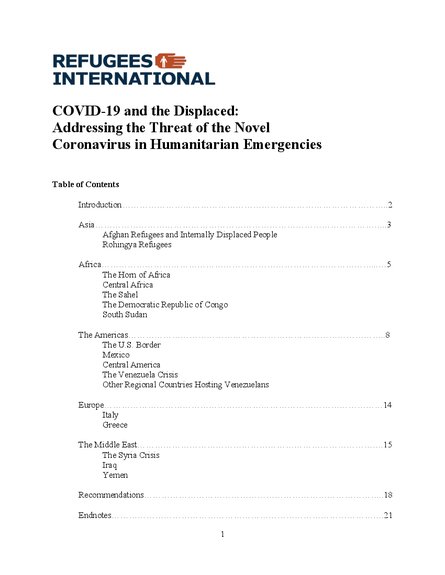
The world is gripped by a truly global public health emergency. From New York to Wuhan, attention and resources are being directed to fight the spread of COVID-19, a disease caused by the novel coronavirus (officially, SARS-CoV-2). On March 11, 2020, the World Health Organization (WHO) officially declared the situation a pandemic. Healthcare systems in even the most advanced countries are being overwhelmed. As the pandemic spreads, the coronavirus will disproportionately impact the world’s most vulnerable, among them refugees, asylum seekers, and internally displaced people (IDPs). These populations must be included in the global response to the virus. This is essential to protecting not only these communities, but societies at large.
The scale and speed of the pandemic underscore how deeply interconnected the world’s populations are. Nevertheless, at precisely the moment when global solidarity and cooperation are essential, many nations are turning inward as they seek to protect their citizens. But a virus does not respect borders. Nor does it discriminate. A truly effective response, not to mention a morally correct one, also must not discriminate.
The world’s more than 70 million forcibly displaced people—including refugees, asylum seekers, IDPs, and other forced migrants—are among the most vulnerable. Already, their displacement leaves them disadvantaged in many ways. The impact of the epidemic both exacerbates and is exacerbated by the conditions in which they live. A series of factors make them extremely vulnerable to the spread of the virus, and these factors are discussed further in this report.
